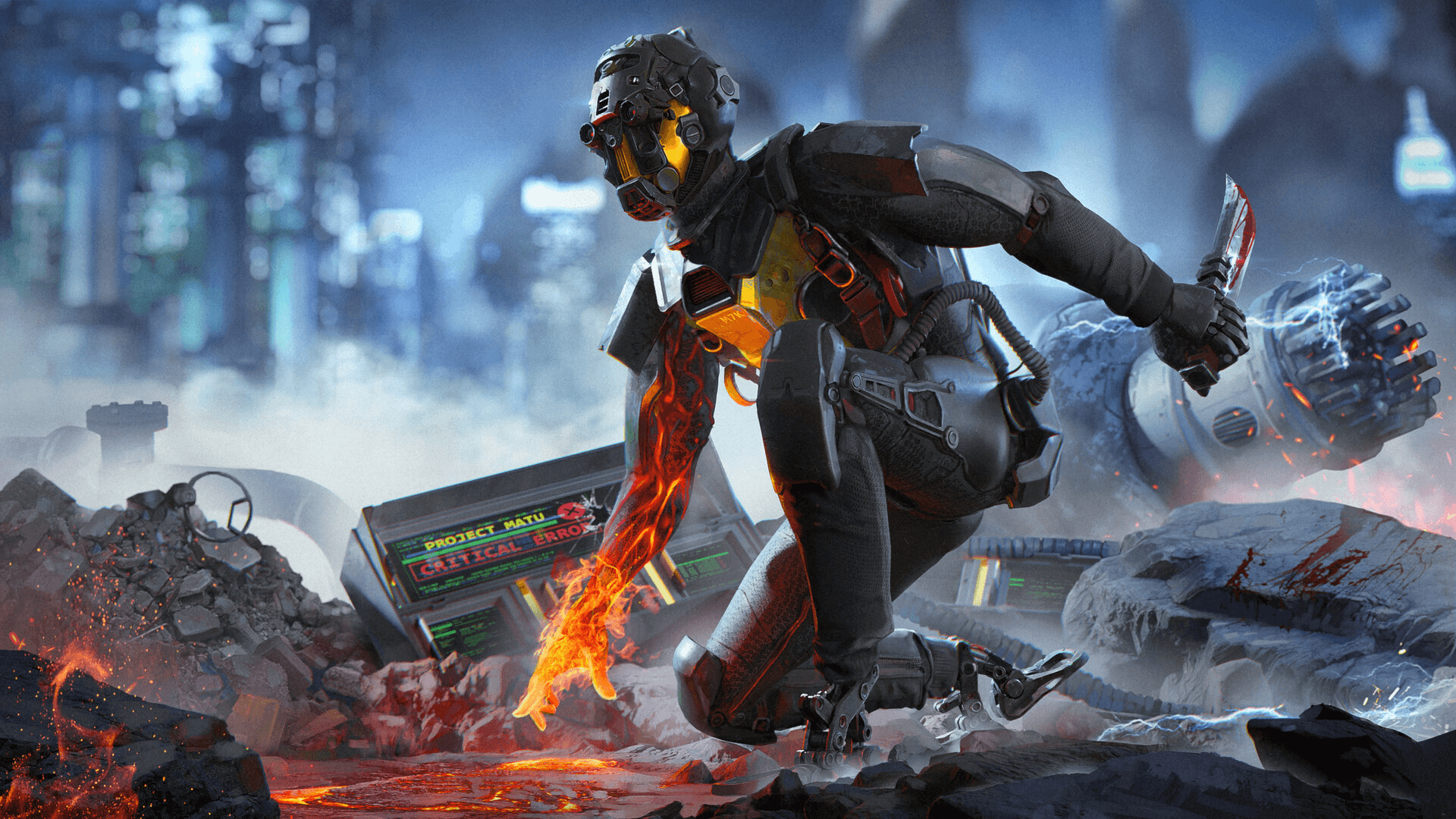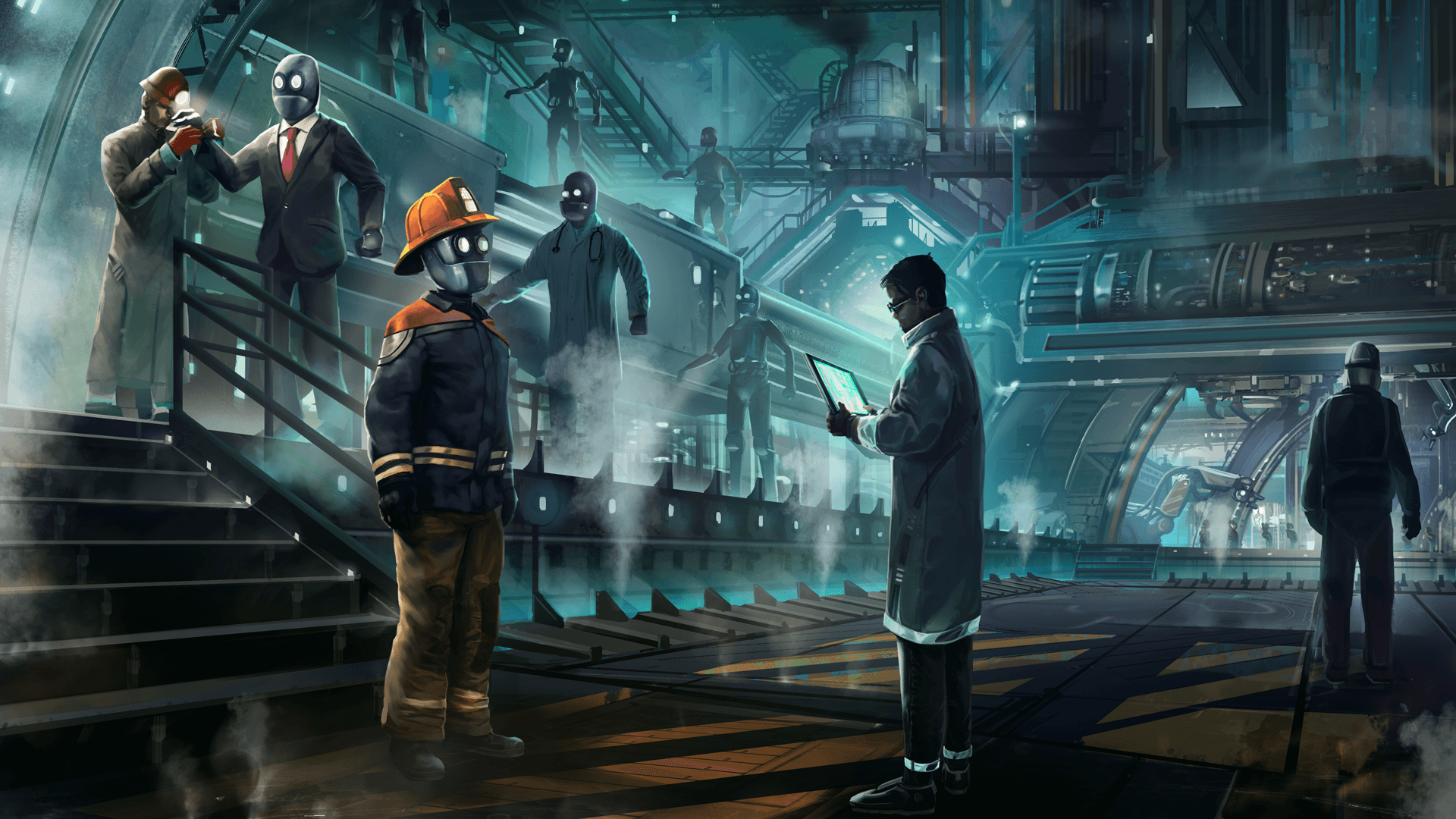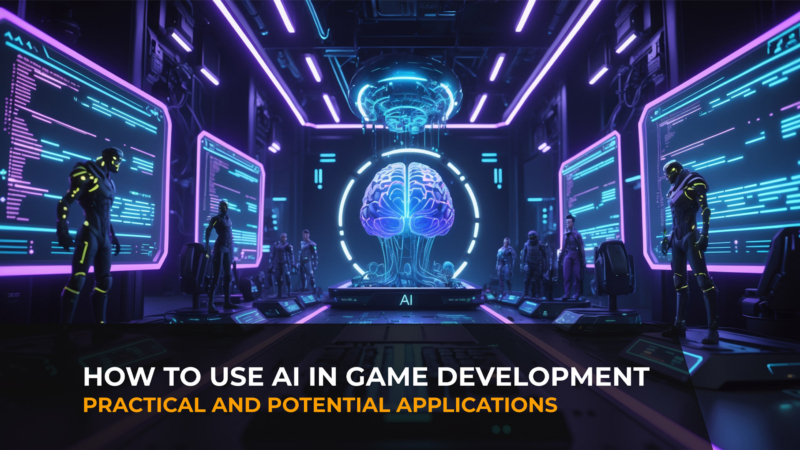The discussion about how to use AI in software development for games has been the subject matter in recent years, accelerated by the development of general artificial intelligence. Both startups and enterprise companies are tempted to use generative AI tools at different stages of software development.
In the dynamic field of game development, AI integration has become more than just a trend — it’s a transformative force changing the industry landscape. However, will AI become a new driving force in gamedev? In this article, we shed light on the almost endless possibilities of crafting worlds with the help of artificial intelligence.
The Role of Artificial Intelligence in Game Development
The application of artificial intelligence in game development is far more than just a step up, as it flips the entire industry upside down. The integration of AI in video game development process allows to create dynamic game scenarios, optimize game testing to save time, transform graphics for fluid gameplay, and much more. Let’s take a deeper look at jaw-dropping real-world examples to show how artificial intelligence is changing the video game industry and why it requires your attention.
Creating game narratives

Have you ever imagined that a game’s story would not only change depending on the player’s choices but would also perfectly adapt to all of their decisions to create a unique experience? Now, in the new era of AI adoption in the gaming industry, it has become a reality.
Artificial intelligence has opened up some truly amazing possibilities for creating dynamic and adaptive storytelling in video games. Modern algorithms can create unique and engaging stories based on the analysis of your actions, changing the course of events, character dynamics, and even game outcomes. This greatly increases the player’s involvement in the game’s plot because the more personalised experience a person gets, the more interesting the story is. Thanks to this degree of interaction, players are immersed in the plot and take responsibility for its development, which changes the narrative.
How many of you are fans of the game Detroit: Become Human? It is in this game that the developers have created a branching narrative with the help of artificial intelligence, in which the player’s choice significantly affects the plot and character development. Playing as one of the three characters, you make decisions that change the dynamics of relationships and open the door to multiple endings. AI has helped to develop a highly personalised storytelling experience that is authentic and emotionally compelling, which tracks these decisions and dynamically adapts the narrative, making the game a huge success and popular.
Generating Procedural AI Content

Modern artificial intelligence algorithms are capable of generating not only entire story arcs but also full-fledged game worlds. This is exactly what procedural content generation is, which, in tandem with AI, generates environments, characters, and even entire levels on the fly. This allows you to create huge, dynamic worlds with endless possibilities, engaging players in a unique experience in every game session.
The use of AI in game development takes procedural generation beyond randomisation to create holistic, immersive settings that adapt to player choices. This approach not only saves time but also opens up a level of scale and complexity that is impossible to achieve manually.
A well-known example of how to use AI in software development to create procedural content is No Man’s Sky by Hello Games. This action-adventure survival game has entire universes of planets created with the help of artificial intelligence, each with its unique ecosystems, landscapes, and creatures. The developers have created an unlimited space for gamers to explore by generating 18 quintillion planets. In addition to the fact that each of the planets differs from the others in its terrain, weather, flora, and fauna, all these characteristics are also generated in real time during the research. Such a huge scale and diversity would not have been possible without artificial intelligence, making No Man’s Sky a pioneer in the creation of procedural content in games.
Transforming graphics and visuals
Another aspect that comes to mind when we talk about the use of AI in video game development is improved graphics. Modern AI algorithms allow to create realistic and immersive graphics by increasing the resolution, improving lighting, and creating new textures. Developers and designers also use AI to model realistic locations and character animations, which makes the gameplay more realistic and smooth. This approach significantly saves time for art teams, which can focus on other important tasks. As a result, games display more detailed and sharp images at higher frame rates, and players can enjoy more visually beautiful settings without sacrificing performance.
One of the most famous examples of how to use AI in software development for visual enhancement in games is Deep Learning Super Sampling (DLSS), a suite of real-time deep learning image enhancement from NVIDIA. This technology uses AI to scale low-resolution images in real time to create high-quality visual effects.
It is the ultra-high resolution that is the best-known and most used feature, especially if you plan to enable ray tracing. In DLSS-enabled games, you’ll enable it in a variety of modes, including Ultra Performance, Performance, Balanced, and Quality. How does this affect games? For example, in Cyberpunk 2077, if you select 4K resolution and choose Quality mode, the game will render at 1440p, while DLSS will upscale to 4K.
Another well-known example where DLSS is used is Alan Wake 2. If you want to play this game in 4K resolution at the highest graphics settings with ray tracing enabled, you have the option of using DLSS in the Performance mode even on graphics cards like the Nvidia GeForce RTX 4080 to achieve 60fps.
Opening the new era of NPC interaction

One highly anticipated aspect of AI-enhanced gaming is NPC interaction. In games of the past, interacting with a non-player character is often not complex, offering scripted responses and limited contextual awareness, which often has the effect of being repetitive and predictable for the player. However, this all changed when large language models such as ChatGPT came into play, allowing for a complete transformation of the dialogue.
Now, by integrating conversational AI into games, developers can create NPCs that can dynamically react to player actions, outfits, inventory, or even current game events. Artificial intelligence allows for richer stories and deeper emotional connections, as NPCs can exhibit complex behaviour, such as learning from past encounters, changing their strategies, or developing a relationship with the player.
A great example of how to use AI in software development of NCP is The Last of Us Part II, where the algorithm improves the behavior of both enemies and allies. Secondary characters in the game work together tactically, react to changes in the environment, and even address each other by name. Perhaps this is what influenced the fans’ frenzy for the game, as this interaction makes the world more immersive, as NPCs behave in ways that mimic real human reactions, adding tension and emotional depth to every encounter.
Applying photorealistic filters
Although this technology is still in its infancy, it is impossible not to mention photorealistic filters when talking about AI in gaming. There is no doubt that the current use of photorealistic filters requires super-powerful computers to work in real time and is quite inconvenient. However, it’s worth remembering that a few years ago, ray tracing was considered something unrealistic. Nowadays, it is a common feature supported by most games, so photorealistic filters have a huge potential.
So how to use AI in software development when it comes to photorealistic features and what makes this system so new and different? First, it became famous after a lot of videos showed old games like Grand Theft Auto III and V remade with more realistic graphics. It is expected that advanced machine learning models will be used to look at and reinterpret visual data in order to improve lighting, textures, and environmental features.
Because of this, the use of photorealistic filters with AI shows what hyper-realistic pictures might look like in the future. Most interestingly, AI in video games could be used to remake old games with photorealistic detail. This would be a cheap way for studios to bring old games up to date for current players. Photorealistic filters powered by AI will one day be used in remastering and computer images, but not yet in real time.
Converting dialogs from text to speech

Did you know that voice acting is one of the most expensive elements of modern RPG development, alongside world-building and animation? For example, The Elder Scrolls III: Morrowind in 2002 had mostly text-based dialogue with minimal voice acting (short greetings, a few lines per character), and the cost of voice acting was very low — only a small fraction of the budget. Compare it to The Witcher 3: Wild Hunt in 2015, which had about 450,000 words in English, 100,000+ voice lines, and cost developers about $4-6 million, including localisation. What can we say about Baldur’s Gate 3 in 2023, which was fully voiced, with 170+ actors and cost $10-15 million+?
As you can see, hiring professional voice actors, managing recording sessions, and editing audio files can be a significant drain on the budget and often results in limited volume and variety of in-game dialogues. However, text-to-speech (TTS) technology is a strong alternative, which can reduce the need for traditional voice actors and enrich games with more dynamic dialogue systems.
This technology has a massive potential to mimic human expressiveness as it learns from large data sets and generates realistic voices. Although TTS still faces some limitations, such as reproducing nuanced emotional characteristics or expressions that are not finely tuned to the character, it has enormous potential to help game studios significantly reduce costs. In the short term, a hybrid approach of using TTS for less important dialogue or prototyping and reserving human actors for key moments may be the best solution.
Optimizing game testing with AI
The last but not least feature of AI in game development is game testing. Since game testing is one of the most resource-intensive aspects of game development, especially for games with a large open world, AI is revolutionizing this process by automating the detection of bugs, crashes, and performance issues. Previously, these tasks required considerable manual effort, but now, AI allows you to analyze huge amounts of game data quickly, identify patterns, and flag potential problems.
In addition, modern AI tools, such as Ubisoft’s Commit Assistant, help to predict potential errors in the code before they are committed. AI algorithms analyse past mistakes and learn from them, thus predicting where similar errors might appear. This helps developers to fix problems faster, speeds up the game development process, and significantly reduces the time spent on manual testing
Summing Up
As you can see, the possibilities of AI in video game development are no longer a futuristic concept but a powerful tool that actively shapes the future of the industry. Artificial intelligence simultaneously offers both large companies and indie studios new creative and technical opportunities, from reducing production costs by implementing new technologies to automating the testing process.
What makes AI particularly attractive in the world of game development is its versatility. That is why the conclusion for game developers is clear: AI is here to stay and the future of your company will depend on how well you can work in tandem with new technologies.




